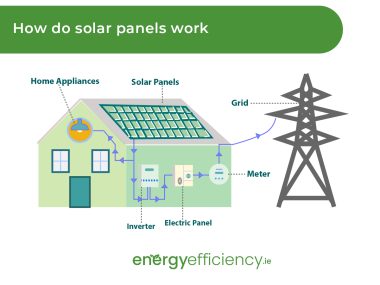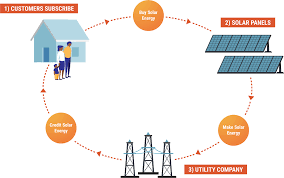As solar power gains prominence in global energy systems, it’s vital to grasp how electrical utility firms manage the electricity generated by solar panels. This overview explores the strategies these companies employ to incorporate solar energy into their grids.
Utility companies, historically reliant on fossil fuels, are transitioning towards cleaner energy sources. Solar power stands out due to its abundance and eco-friendliness. However, integrating solar electricity into existing systems presents challenges such as intermittency and distributed generation.
To tackle these issues, utility companies have developed methods like “net metering” and “feed-in tariffs.” Net metering enables solar panel owners to offset their electricity usage by sending surplus power back to the grid, reducing bills or earning credits. Feed-in tariffs involve utility companies purchasing solar-generated electricity from customers at set rates, encouraging solar adoption and grid integration.
Additionally, utility firms may use Renewable Energy Credits (RECs) to recognize the environmental benefits of solar energy. By buying RECs, they signal commitment to renewables and support solar projects.
These mechanisms aid solar integration, but their effectiveness hinges on regional policies and market dynamics. Understanding how utility companies handle solar power is crucial for navigating the changing energy landscape towards sustainability.
In the following sections, we’ll delve deeper into each method, examining their principles, advantages, challenges, and the evolving trends shaping solar energy integration by utility companies.
How do electrical utility companies account for power generated by solar panels
- In net metering, surplus electricity generated by solar panels is fed back into the grid, with a specialized meter tracking both consumption from the grid and solar generation. Customers are then billed or credited for their net electricity usage, potentially receiving credits or payments for excess generation.
- Alternatively, some regions implement a feed-in tariff (FIT) system, where utility companies purchase renewable energy, such as solar power, from customers at a predetermined rate, often higher than the retail price. Solar panel owners receive payments for the electricity they contribute to the grid.
- Additionally, utility companies may utilize Renewable Energy Credits (RECs) to account for solar generation. These credits reflect the environmental benefits of renewable energy production and can be sold independently of the electricity, offering another revenue stream for solar panel owners.
These approaches enable utility companies to integrate solar power into their energy mix, promoting renewable energy adoption while maintaining infrastructure stability. However, specific regulations and policies governing solar integration vary by location and utility provider.











